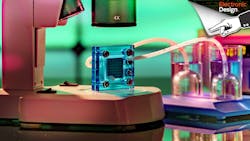EPA Proposes Phasing Out All Battery-Powered EV/HEVs by 2035
Members can download the entire collection of April 1st articles in PDF format.
From April 1st, 2021 @Electronic Design
After several years of detailed study, the Environmental Protection Agency (EPA) has proposed new regulations that would ban the sale of all-electric and hybrid-electric vehicles (EV/HEVs) after 2035. They gave two primary reasons for this dramatic shift: First, the enormous environmental destruction caused by intensive mining of the minerals needed for the batteries including lithium, cobalt, and chromium; and second, the acknowledgement that these minerals are critical for many other applications, while their use in vehicles is consuming a finite resource to excess.
Administrators suggest that the auto industry look to alternatives such as hydrogen-based fuel cells for the next generation of EV/HEVs. This hydrogen can be obtained from water using one of several processes, including electrolysis, and is in no danger of running out.
As one official said, “When we first pushed the transition to battery-powered EV/HEVs using lithium-ion cells primarily, no one assessed the huge quantities of minerals that would be consumed. Yet these same minerals are irreplaceable for small-battery applications such as medical equipment, laptop computers, and smartphones, as well as many industrial alloys, materials, and even medicines themselves. We simply cannot afford to let motor vehicles ‘gobble up’ these minerals to such an extent. In addition, the damage caused by mining itself and mining waste is irreversible and unacceptable.”
Reactions from automobile companies has been mixed. They have invested heavily in battery-based EV/HEV products for decades, and the switchover in their product lines away from hydrocarbon-fuel vehicles is nearly complete. As this new proposal represents a dramatic shift in on-board energy storage, much of that design and manufacturing effort will need to be redirected.
The hope is that the design expertise and manufacturing experience embedded in the rest of the powertrain (electric motors, power-delivery controllers, and software) can be adapted, but the situation is very unclear at this point. As one senior engineer noted, “This is yet another manifestation of the well-known design maxim: Beware the law of unintended consequences.”
Read more at April 1st, 2021 @Electronic Design
About the Author

Bill Schweber
Contributing Editor
Bill Schweber is an electronics engineer who has written three textbooks on electronic communications systems, as well as hundreds of technical articles, opinion columns, and product features. In past roles, he worked as a technical website manager for multiple topic-specific sites for EE Times, as well as both the Executive Editor and Analog Editor at EDN.
At Analog Devices Inc., Bill was in marketing communications (public relations). As a result, he has been on both sides of the technical PR function, presenting company products, stories, and messages to the media and also as the recipient of these.
Prior to the MarCom role at Analog, Bill was associate editor of their respected technical journal and worked in their product marketing and applications engineering groups. Before those roles, he was at Instron Corp., doing hands-on analog- and power-circuit design and systems integration for materials-testing machine controls.
Bill has an MSEE (Univ. of Mass) and BSEE (Columbia Univ.), is a Registered Professional Engineer, and holds an Advanced Class amateur radio license. He has also planned, written, and presented online courses on a variety of engineering topics, including MOSFET basics, ADC selection, and driving LEDs.
